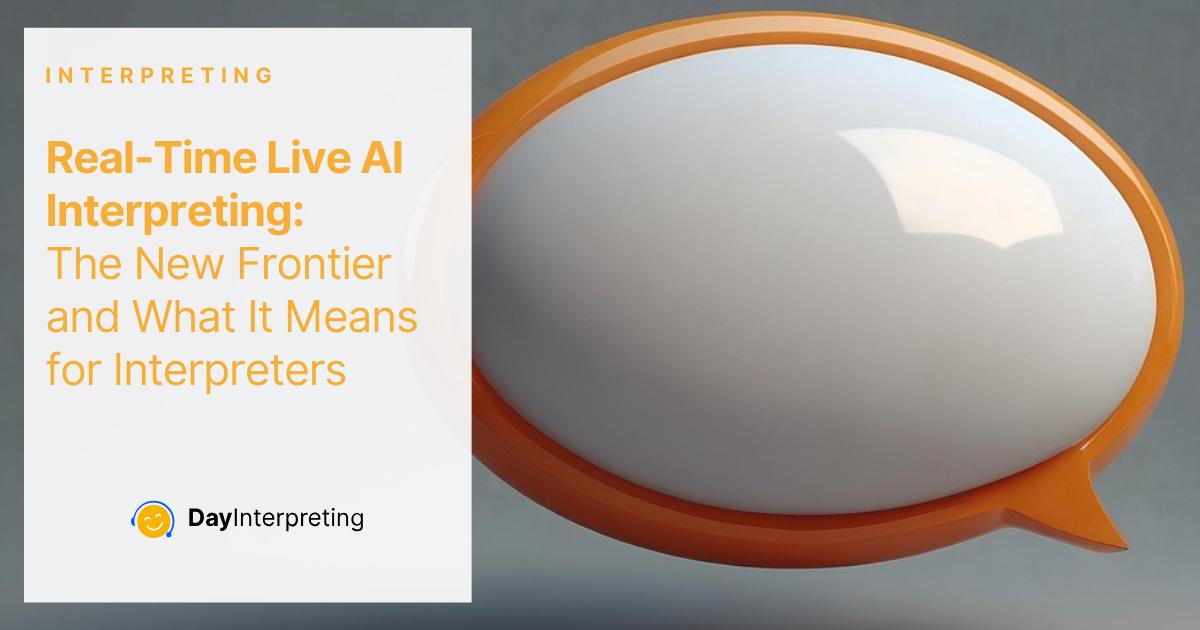On August 8, 2025, Boostlingo quietly rolled out the beta version of its AI Interpreter, a brand-new feature offering real-time, context-aware interpreting across multiple languages and industry settings. This comes at a pivotal moment, when AI isn’t just assisting but acting in real time to fill communication gaps. For interpreters, this leap invites both curiosity and caution. How will live AI interpreting change workflows, expectations, and the interpreter’s role?
What Exactly Is Live AI Interpreting?
Boostlingo’s AI Interpreter is designed to understand and translate spoken language on the fly, much like a human interpreter, but with the responsiveness of a machine. Unlike standard ASR, this system factors in context, tone, and domain to generate appropriate translations in real time.
Imagine a nurse calling: “Initiate the 10-unit insulin drip,” and the system instantly delivering that message accurately in Spanish, to someone who doesn’t speak English.
Early Reception and Industry Implications
This announcement ignited a conversation across the industry:
- Accessibility expansion: Organizations with limited budgets or geographically distributed teams can streamline language support for routine use cases.
- Efficiency potential: In settings like corporate seminars or basic support calls, this feature could lighten the interpreter’s load—or replace a human entirely.
- Training need: Interpreters will increasingly need to work alongside these tools, guiding, editing, or intervening when AI falters.
Slator’s recent coverage confirms that interpreters are indeed adopting AI tools, though more slowly than their translator counterparts, highlighting the rising importance of hybrid workflows.
Interpreters’ Role in an AI-Powered World
This shift doesn’t render interpreters obsolete, it reframes how they contribute:
1. Real-Time Quality Guardians
AI may handle common phrases or standard vocab, but interpreters are essential for ensuring nuance, cultural accuracy, tone, and context, especially when stakes are high.
2. AI Trainers and Editors
Interpreters can guide AI via glossaries, feedback loops, or human review, helping it learn high-value terminology, industry styles, or cultural sensitivities.
3. Escalation Specialists
Critical or high-stakes segments, like legal proceedings, medical emergencies, or emotional counselling, still demand human-led interpreting. Interpreters must be ready to step in immediately when AI uncertainty arises.
Looking Ahead: Where This Could Lead
Hybrid Human-AI Models Become Standard
We might see workflows where AI covers general segments, and interpreters engage for precision, nuance, or emotional content, letting each play to their strengths.
New Certification and Training Paths
Interpreter training programs may begin integrating AI literacy modules: how to monitor AI output, intervene appropriately, and maintain ethical oversight.
Opportunities for Niche Expertise
Interpreters specializing in sectors like healthcare, law, or migration, here even small errors have big consequences, will remain in high demand.
A Note of Caution on Live AI Interpreting
Early-stage systems like Boostlingo’s beta offer great promise, but they also raise important concerns:
- Over-reliance risk: Organizations might begin cutting corners or undervaluing certified interpreters in favor of lower-cost AI.
- Bias and accuracy: AI is only as good as its training data. Untenable errors in tone, gendered language, or cultural context could be harmful.
- Ethical transparency: Users should know when they’re interacting with AI versus a human, and data privacy must be safeguarded.
Conclusion: The Next Chapter for Interpreters with Live AI Interpreting
As of mid-August 2025, live AI interpreting has gone from speculative to tangible reality. The AI Interpreter beta from Boostlingo signals a turning point in how multilingual access could be delivered, quickly, affordably, and at scale.
For professional interpreters, the future isn’t about replacement, it’s about adaptation. Those who embrace AI as a powerful ally, and shape its ethical, cultural, and technical implementation, won’t just survive. They’ll lead.
After all, no matter how advanced AI becomes, language remains deeply human. And human interpreters will continue to be the ones who bring it meaning, clarity, and connection.





0 Comments